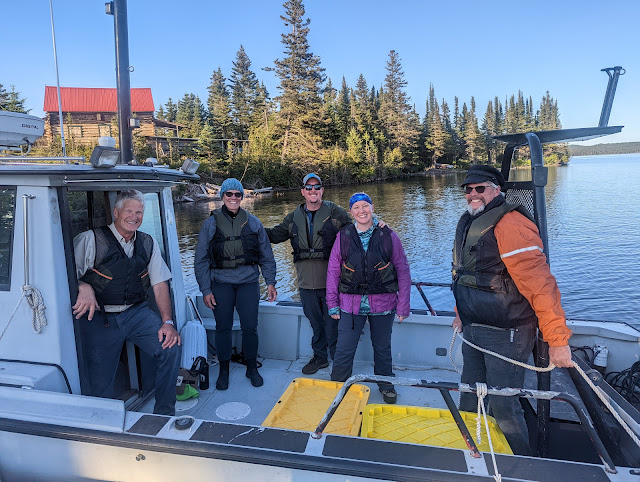The Other Story of the America
“Soon after clearing the dock in Washington Harbor, Captain Smith turned command of AMERICA over to First Mate John Wick, with Fred Nelson at the wheel, and retired to his cabin behind the bridge. Five minutes later AMERICA thudded over a reef, bumping four times and tearing a small hole through its single bottom below the engine room on the starboard side.”
Thom Holden, in S.S. America - A Diver’s Vision of the Past, Stephen B. Daniel and Thom Holden, February, 2001
The personally more relevant story for me is that of a small group of divers that tried to raise the AMERICA some 33 years after her sinking. A salvage operation led by one Jim Marshall, the father of my wife.
The salvage effort actually started in 1929, the year Captain Cornelius O. Flynn submitted a successful bid for the salvage rights after making a survey as owner’s representative. In that survey, he found a single hole in her starboard side hull, and thought that she could be raised and placed back in service. Unfortunately, the depression intervened and he was never able to act on that vision. The dream was rekindled by Conelius’ son, Paul, but funding for a real salvage attempt never materialized through World War II and into the 1950’s. In 1957, hardhat salvage diver Jack Coghlan from Port Arthur, Ontario (now Thunderbay) described his exploration of the wreck, as written by Thom Holden, “Entering the dining compartment,” he said, “it’s sort of eerie. You can still see dishes on the sideboards, and the tables are piled high on one end of the room.” Thom continued, “He reported too, that a lot of debris had come loose or was torn away from the wreck and scattered around it. Also, a forward cargo hold still held the old truck, described at the time as still in fair condition.”
“Suddenly we saw her… a ghostly dark shape in the green depths. As we approached, she seemed to surround us, and I glanced around nervously to establish my bearings. With a tap on the shoulder, Chuck gestured downward, and we soon found ourselves straddling the gunwale of the old steamer AMERICA.” He went on, “Wreckage was all around us, wherever we looked. Old boxes and boards littered the deck, and a steel beam and supporting pillar loomed over us. On closer examination, we found the boxes were old fruit containers, covered with the silt of 37 years of immersion. The forward works were missing, we realized, removed by the action of ice over many winters. We were on the main steel deck which was lying at a crazy angle. Chuck found an open hatch in the deck, and after exchanging signals, he entered…and disappeared into the gloom of the hold.”
“In this brief dive, we had traveled back 37 years in time, to a time capsule that was entombed in 1928. We were examining hallowed ground… In one way or another, she had touched the lives of the many people who had braved the elements to establish a frail bit of civilization on the bold north shore of Lake Superior.”
Sparked by this experience, he and several other Duluthians formed the S.S. America Salvage Company, Inc., soon after receiving permission from the National Park Service to salvage the wreck and acquiring the rights from Paul Flynn, who enthusiastically supported the project. In addition, the firm acquired the wooden cabin cruiser SKIPPER SAM, to serve as dive boat while working out of Grace Island, a short distance from the North Gap. I would meet my wife on that boat, the SKIPPER SAM, while it docked in Grand Portage, making repairs on its aging engine, preparing to make the trip across to Grace Island in years later as a recreational cabin cruiser.
The plan for the raising was to seal all of the steel hull’s holes and openings such as portholes, smokestack openings, a stairway, cargo hatches and, of course, the original hole left by the reef. Then, using an air lift - forcing air into the vessel that would escape through a pipe to the surface, creating a vacuum that would carry water with it to the tune of 160,000 gallons per hour. Once afloat, the AMERICA could be pulled to the original gravel shore on which Captain Smith had intended to beach her, and make further repairs necessary to float her back to Duluth. Since the ships galley, engine room, and many cabins were largely undamaged, it was assumed the ship could be refitted to serve as a tourist attraction, an adjunct to other planned attractions at the Duluth waterfront.
Foul weather, unfortunately delayed the floating of the wreck, following successful sealing of the hull. September spilled into October, making it necessary to postpone the refloating until the next spring. After securing new special-use permits for Grace Island and for the salvage operation from the Park Service, the crew returned to find a new, much larger hole in the hull. Divers suspected such a hole could only be caused by dynamite in an effort to stop the salvage. Which it surely did. Following that development, and without further investigation, the National Park Service legal staff rendered an opinion that the salvage company actually did not own the wreck, since it had been such a long time between the actual wreck and the attempted salvage. Any effort to raise the America was abandoned, as she was left to become one of most popular recreational diving wrecks in the Great Lakes.









Ver interesting!😎
ReplyDelete